Slide Show: Inside the Arts & Crafts
July 29, 2013
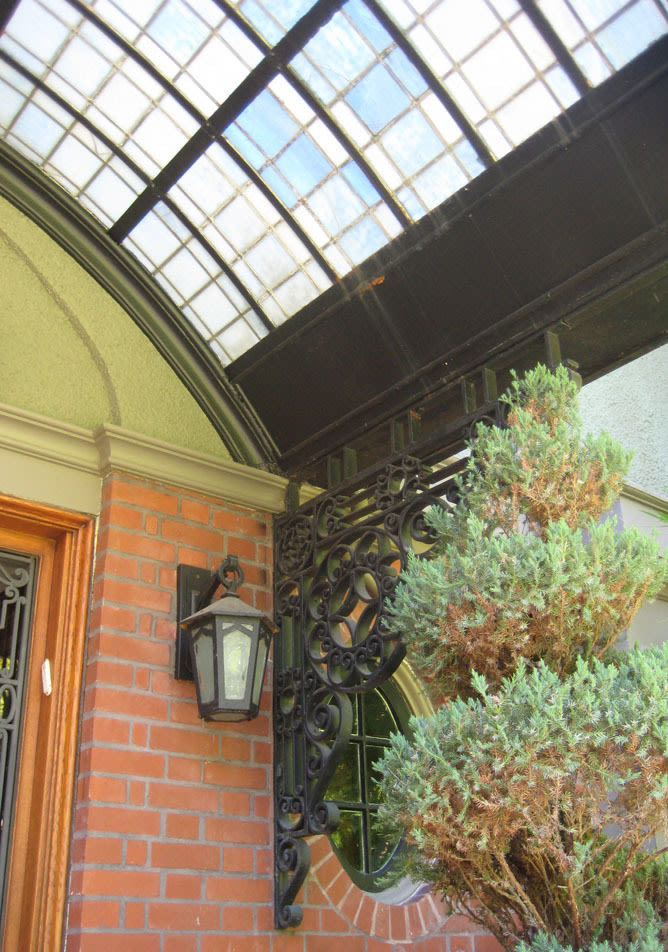
Entry Canopy
A wrought iron and glass canopy shelters the front entrance; its style and materials are reminiscent of Parisian Metro entry structures.
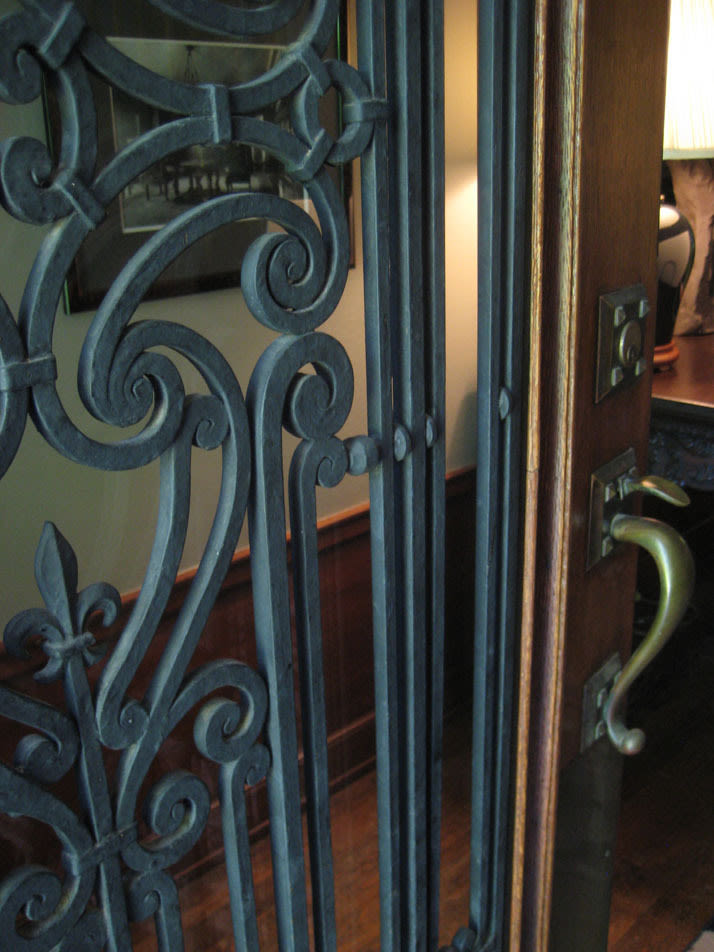
Wrought Iron Door Detail
Hand crafted, as are many of the intricate, decorative elements in the house.

Main Entry Stairwell Landing
Leaded glass windows lend the atmosphere of a medieval library to the landing of the grand stairway.
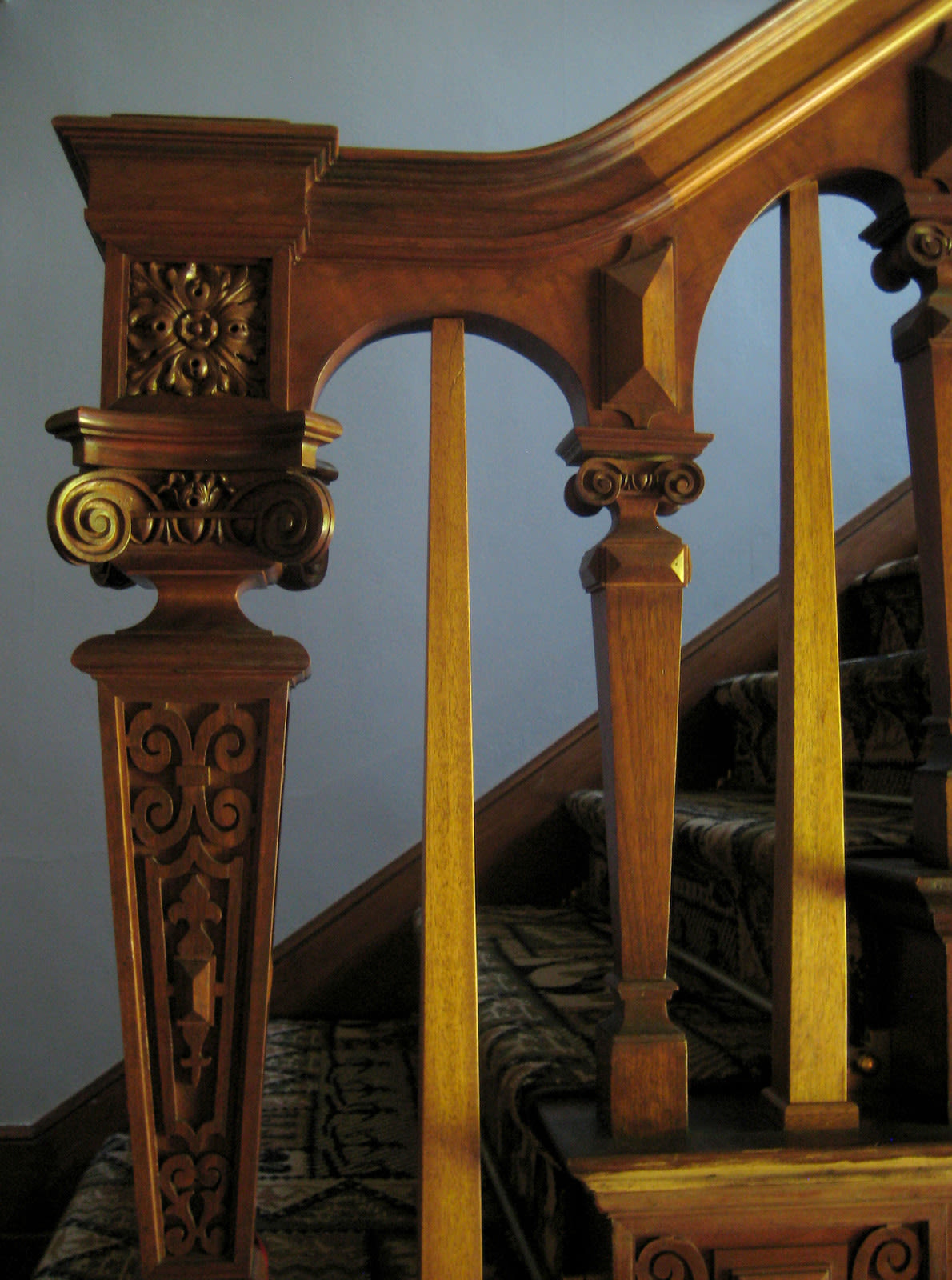
Carved Woodwork of Stair Rail
Original woodwork is preserved throughout the house; here, the stair rail leading to the second floor.
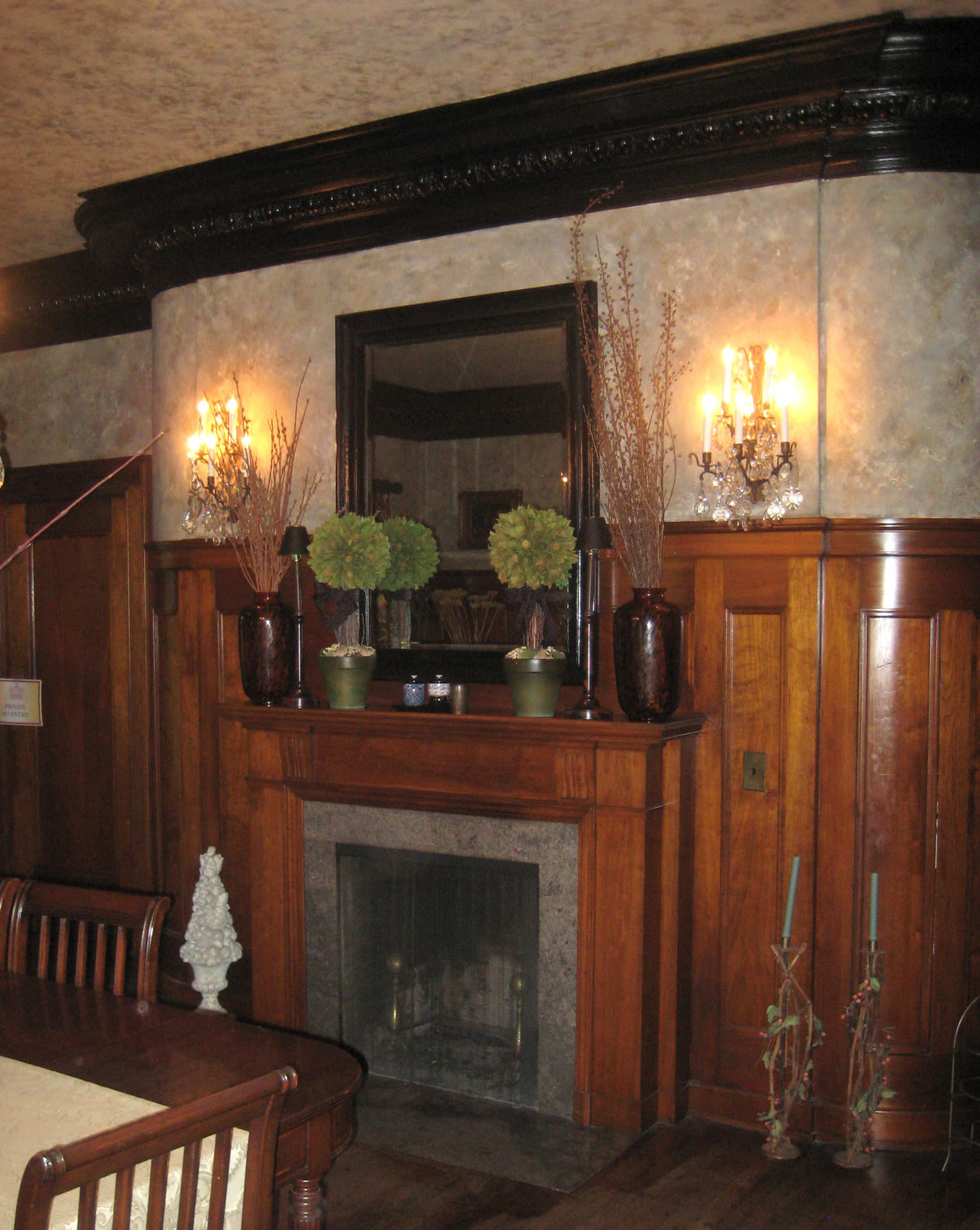
Formal Dining Room - Hearth
Dark woods throughout the house create a very somber interior and sheltered feeling.

Front Windows in Main Living Room
Facing east, the living room includes floor to ceiling windows letting in light to an otherwise relatively dark house.
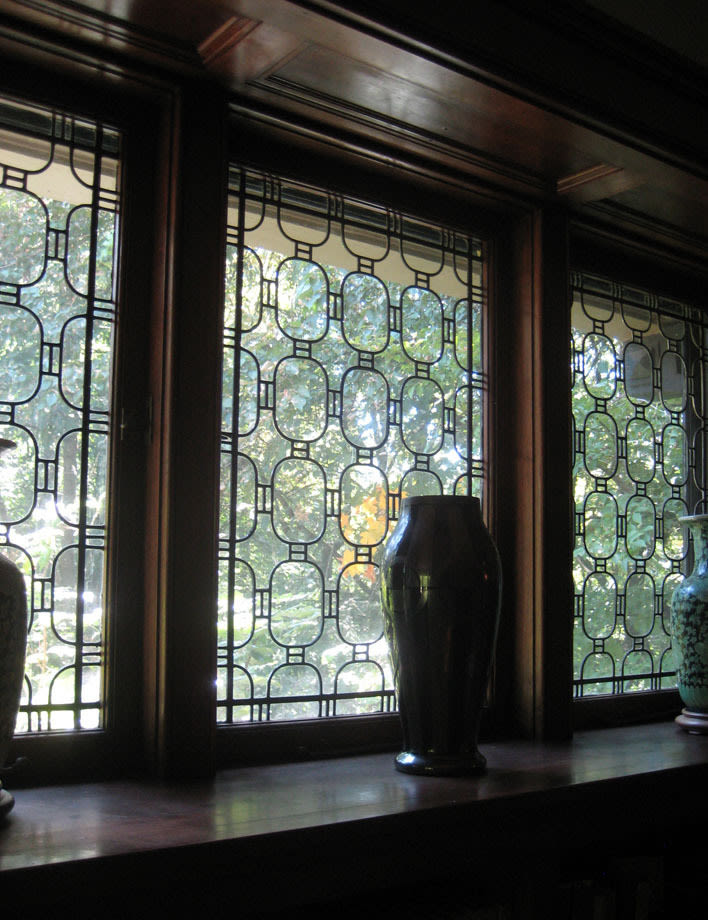
Leaded Glass in Main Living Room
Built-in shelves in the living room are topped by recessed windows with a stylized Asian pattern of leaded glass.
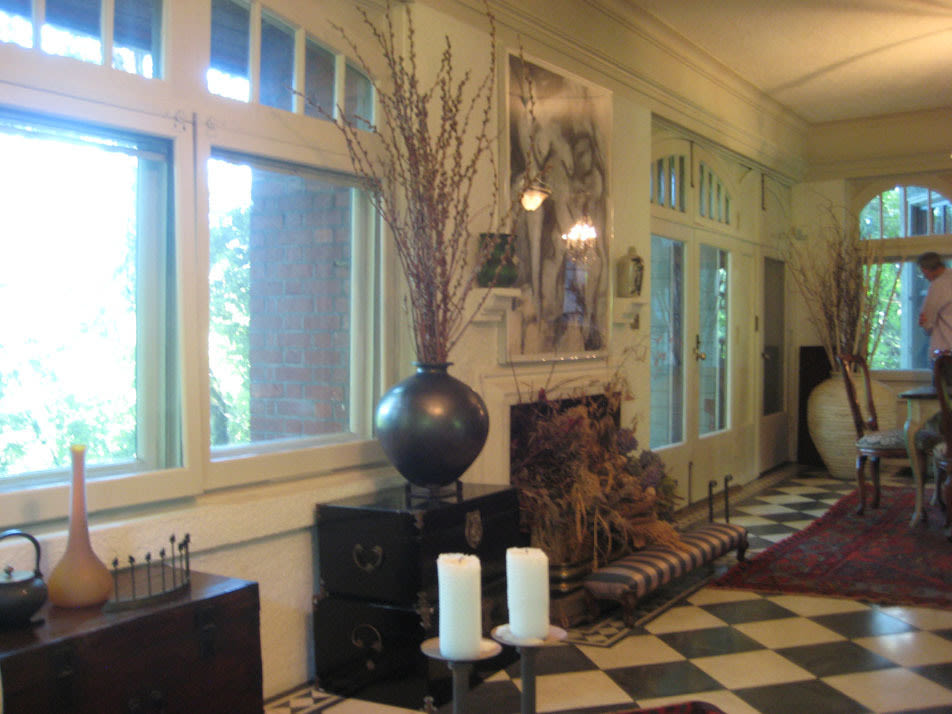
Sunroom
The westward-facing, enclosed sunroom was added adjacent to the main living room. That and other additions were designed by the original architects for the home's second owners, two sisters, Henrietta and Mary Failing, who acquired the house in 1922.

Back Terrace
The brick terrace (built off the sunroom to the west) was another of the 1922 additions. It and a series of French doors connected the house to its surroundings more than the more purely sheltering (and typically Arts & Crafts) original design had done.
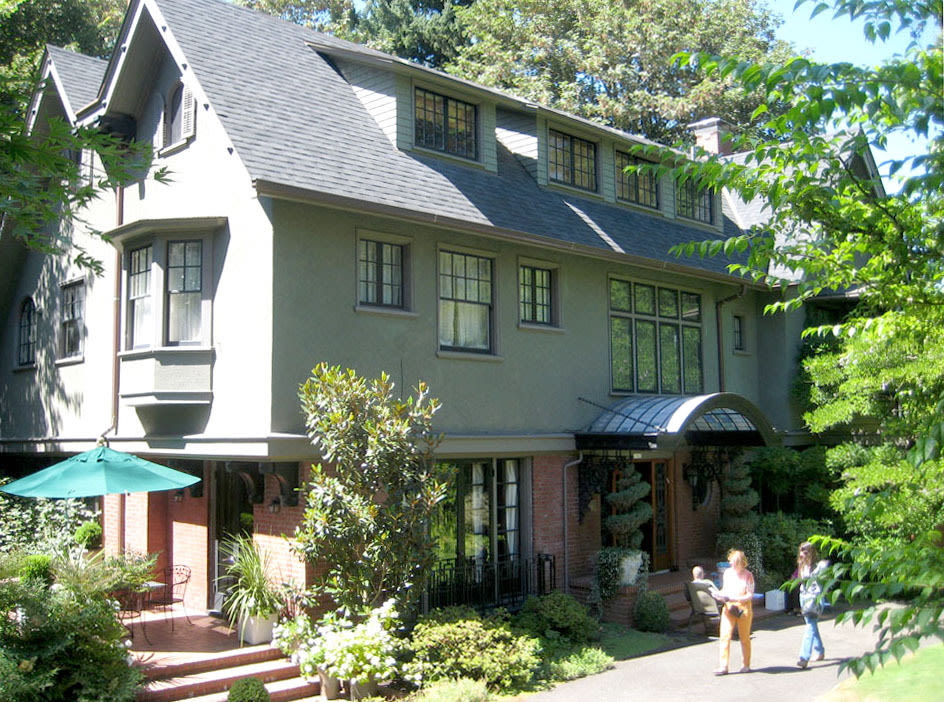
Giesy-Failing House, 1911
The Giesy-Failing house is animated by a complex roofline of intersecting gables. The architects added some of the dormers (and made other changes) in 1922, 11 years after they designed the original home.
